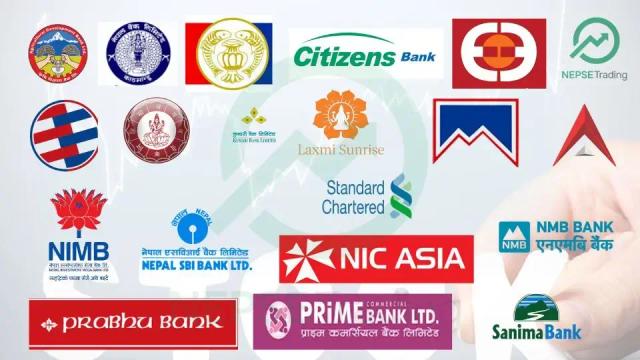Deposits Rise Twice as Fast as Loans in First Quarter, Reflecting Deepening Economic Slowdown
Author
NEPSE TRADING

Nepal Rastra Bank’s latest three-month data for the current fiscal year paints a clear picture of a slowing economy. While deposits at banks and financial institutions (BFIs) grew by 3.0 percent during the review period, loan expansion stood at only 1.5 percent—exactly half the pace of deposit growth. This widening gap between liquidity accumulation and credit flow highlights the deepening economic lethargy affecting businesses, households and investment activities across the country.
On a year-on-year basis, deposits at BFIs grew by 13 percent by the end of Ashoj 2082. However, credit to the private sector rose by only 7.3 percent, underscoring a persistent demand-side constraint. Analysts say the divergence between deposit mobilisation and credit expansion reflects weak confidence in the economy, subdued investment appetite and uncertainty surrounding long-term economic policy.
During the review period, deposits increased by NPR 218.72 billion, taking the total to NPR 7.482 trillion. Despite this significant liquidity build-up, private-sector credit grew by only NPR 82.93 billion, reaching NPR 5.580 trillion. By comparison, during the same period last year, private-sector credit had grown by 2.5 percent (NPR 128.65 billion)—indicating that credit demand has weakened further this year.
The composition of private-sector lending also shifted compared to last year. By the end of Ashoj 2082, 62.8 percent of private-sector credit was directed toward non-financial institutional sectors, while 37.2 percent went to individuals and households. Last year, these shares stood at 64 percent and 36 percent respectively. This shift suggests a slight contraction in institutional credit demand and a mild rise in household borrowing.
Credit expansion across different classes of banks remained modest. Commercial banks expanded credit by only 1.6 percent, development banks by 0.5 percent, and finance companies by 1.6 percent. The muted growth signals broad-based stagnation in loan demand across all layers of the financial system.
A sector-wise breakdown shows where loan demand is emerging—and where it is shrinking. Loans backed by real estate and residential mortgages accounted for 64.3 percent of all collateral-backed lending, compared to 65.8 percent last year. Meanwhile, credit backed by agricultural and non-agricultural current assets rose from 13.4 percent to 15 percent, indicating slight improvement in production-related activities.
In the first quarter of FY 2082/83, credit growth was as follows:
Construction sector: 2.9% increase
Transport, communication and public services: 2.4%
Industrial production: 2.4%
Consumer lending: 1.6%
Wholesale & retail trade: 1.4%
Service industry: 0.3% decline
Meanwhile, real estate loans (including housing) rose by 3.2 percent, margin lending by 3 percent, cash credit loans by 2.7 percent, term loans by 0.7 percent, and hire-purchase loans by 0.6 percent. On the other hand, trust receipt (import) loans fell by 4.3 percent, reflecting weak import activity, while overdraft loans declined by 3.3 percent.
Despite abundant liquidity, credit expansion remains sluggish. Bankers attribute this to slow economic activity, political uncertainty, reduced business confidence after recent youth-led protests, and delays in government expenditure. They report that even when banks are ready to extend loans, industry and business-sector proposals are simply not coming in.
Uncertain government leadership, unclear policies and weakened long-term planning have made investors hesitant to commit capital. Rising loan recovery risks have further discouraged banks from aggressively expanding credit. As a result, credit growth has slowed to one of its weakest levels in recent years.
Deposit growth also reflects shifting customer preferences. By the end of Ashoj, deposits were composed of 6.4 percent current deposits, 38.7 percent savings deposits and 46.4 percent fixed deposits. Compared to last year, the share of fixed deposits fell sharply from 54.8 percent to 46.4 percent—largely due to declining interest rates.
Institutional deposits accounted for 35.3 percent of total deposits, only slightly lower than 35.8 percent last year. This stability suggests institutions are still parking funds in banks despite lower returns, aware that limited investment alternatives exist in the market.
Overall, Nepal’s banking sector is witnessing rising deposits but weakened loan growth—an imbalance that reflects broader economic uncertainty. Unless confidence returns to the business community and government spending accelerates, the credit market may continue to stagnate, even as banks remain flush with liquidity.


